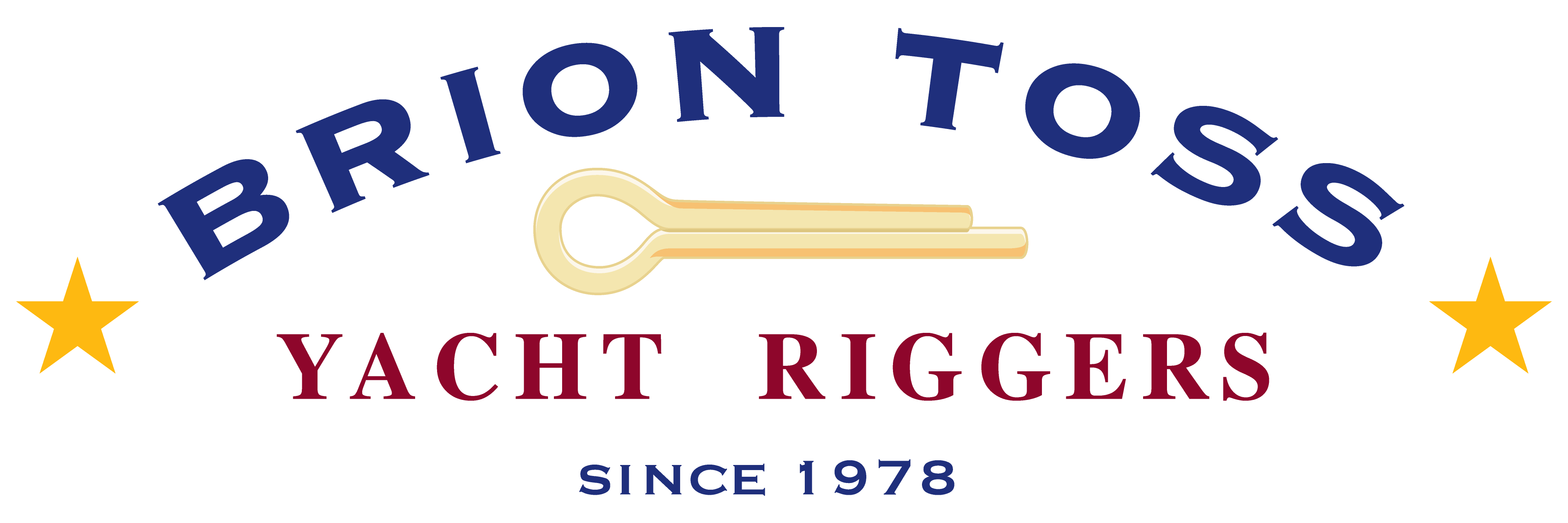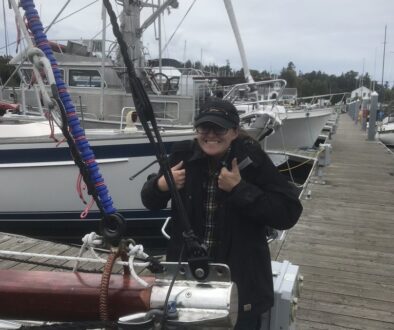To Engineer is Human
All sailboat rigging is engineered, which is to say that, somewhere along the line, someone gave some thought to how much load was going to come where, and worked to make everything strong enough that things probably wouldn’t break. This engineering might have been done to the fifteenth decimal place, using near-sentient computers to track vectors, moduli, moments, accelerated loads, and all the other variables we’ve managed to identify, quantify, and give Latinate names to. Or the engineering’s most visible outward manifestation might have been the squint in the eyes of the semi-literate artisan who gauged all those variables from a somewhat less formalized data base. Neither approach, by itself, would necessarily be a guarantor of success or failure, nor would any other single approach, because intuition, memory, comparison, analysis, analogy, and all the other mental tools available to us are only tools, only ways to filter and massage and play with information. We get it right – sometimes – but that’s a long way from saying that the process of engineering leads inevitably to structural satori. In the words of writer Henry Petroski, “To engineer is human”; we do our best, but the outcome is an expression of our own wonderfully, quirkily imperfect minds.
In rigging, I believe the imperfection is often amplified, because the general populace understands tension structures much less well than they understand buildings, engines, plumbing, and other common technologies. You get a lot more anomalous, off-the-chart weirdness in rigging than you get in other engineered forms; people charge in, thinking “It’s just some strings holding up a stick; how complex can it be?” I once had a client who wanted to make a really dangerous modification to his mast, making it taller without compensating for the changes in unsupported length or the decreased staying angles. I went through the numbers, but to no avail. “Brion”, he finally said, “I’m a hydraulics engineer, I know what I’m doing”. I was too stunned to speak for a minute. Obviously he saw rig design as an intrinsically simple exercise and hydraulics engineering as an intrinsically involved one, so that if you had mastered the latter you had somehow mastered the former. That this was not the case was brought home by the behavior of the mast after his modifications.
So riggers operate under a double design challenge: they must deal with an exquisitely elaborated, multi-variable, constantly evolving art; and they must fight the prevalent assumption that what they’re doing is somewhat less mentally challenging than cleaning a swimming pool.
If they’re not up to those challenges, what you get is, as it turns out, an all-too-typical contemporary sailboat rig: wire too big or too small; weak and/or corrosion-prone terminals; weak and/or foul-led chainplates and tangs; out-of-tune tune: frustratingly-led running rig of less-than-ideal construction; and all the other details, profound and incremental, that add up to decreased performance, safety, sailing ease, and appearance.
There are two reasons that we don’t see more rig failures than we do. The first is that sailboats live in in an “artificial safety factor,” because they are – or should be – engineered to withstand far higher loads than they are ever likely to see in their entire lives. A typical monohull rig, for instance, should be engineered to withstand loads at the vessel’s maximum righting moment, which might occur at about 60 degrees of heel. This is not an angle that a boat is likely to see, but it could happen, so we have to design around the possibility. Not content with that, we layer on a considerable safety factor, too. In the real world one has to be kind of crazy to heel one’s boat even as much as 30 degrees. Too much spilled coffee and sliding sailors. That kind of heel does happen, and it can feel scary, but the loads there are at maybe a quarter of the strength of the rig. Multihulls tend to live closer to their maximum righting moment, which is one reason that for them we compensate with an even higher safety factor.
Since our rigs are so much stronger than they need to be, they hardly ever break, so it is easy to be lulled into a false sense of security. The trouble is that you don’t get to choose when your boat goes to full righting moment – you could get caught by a gust at any time. Perhaps more significantly, as we are lulled things degrade, and sometimes, given attitudes about rigging, they weren’t optimal to begin with.
The second reason we don’t see more rig failures is that, somewhere along the line, there usually are people in design and fabrication who understand what is actually happening in a rig, and are taking things seriously. They produce gear that is so strong, so appropriate, so right for the job, that it’s hard to foul it up completely. You might think of this as the social aspect of engineering; at any remotely advanced technological level, making things is a team effort, and the members of a good team can make up for the shortcomings of other team members. Every time I install a toggle on a rig, I take it on faith, backed up by experience, that the people who smelt the ore, formulated the alloy, formed the plate, set the specs on the bending machine, and made the clevis pins, knew what they were doing. Or at least that most of them did. What is more, I have to believe that they cared about what they were doing, and that part of that caring was expressed in educating others, bringing them along for their own sake, as well as the sake of the team. If they do this, I can keep counting on them. This caring is a blessing on every piece of gear I install. If it is absent, all of my elaborate calculations, fussing, and opinions on what’s right are reduced, at least, in their significance.
I believe that all of us want to do things well, and that we only need to become acquainted with the rewards of doing things well: satisfaction; autonomy; a sense that you are part of something greater than yourself; and the inspiring burden of knowing that you are responsible for the safety of other people. And yes, on the mundane side, a likelihood of ongoing employment. This urge to do well is so strong that, to paraphrase Mr. Petroski, you might say that to be human is to engineer.
Note: If the above appealed to you, then you will probably enjoy Mr. Petroski’s book To Engineer is Human. It inspired the title of this piece, and its content, and much of my professional and personal life. You can find it through any bookstore worthy of the name.
Our catalog has been largely overhauled recently, thanks to the tender ministrations of our friend and techie Scott Wilson. Take a look around. Thanks, Scott.
You’ll find lots of other articles in the blog section of our site. I always love hearing from you, so feel free to chime in with suggestions, corrections, puzzle ideas, etc.




April 20, 2018 @ 7:52 am
As someone that has seen the 60 degree heel thing with a large A-Sail up and an override on the Spin Sheet, I am very glad that the designers took the loads that “might” occur very seriously.
As a former designer I always took the loads and structures very seriously and triple checked my work.
April 20, 2018 @ 10:03 am
Glad to be part of a team!
Puzzle Contest: Anomalous Sheets – Brion Toss Yacht Riggers
April 25, 2018 @ 2:58 am
[…] note, thanks to all of you who were in touch to say that you liked my most recent article, To Engineer Is Human. You can find it and other posts and puzzles in this site’s Blog section. In the near […]
Puzzle Contest: Anomalous Sheets, the Answer – Brion Toss Yacht Riggers
May 2, 2018 @ 3:03 am
[…] indulge yourself reading what is now a sizable backlog of articles and Puzzles on this blog, like “To Engineer Is Human,”“ the three-part “Return” series, “How to Build a Wisconsin Supper Club,” […]